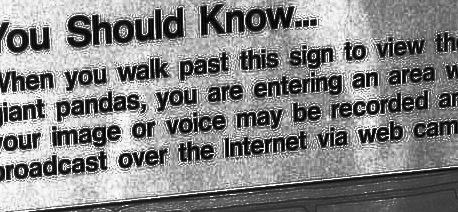May 22, 2004
Continuous Time Bayesian Networks
A CTBN factors the state space much like a Bayesian influence diagram. The image above shows the graphical model which describes the independencies in a particular domain related to drug response. In the CTBN paradigm, cycles are allowed. This is due to the fact that all influence is considered to occur over time however infinitesimal that amount of time may be. So, for example, in the diagram on the left, the cycle at the top of the diagram would be interpreted from a DBN perspective as Eating_N -> FullStomach_N+dt , FullStomach_N -> Hungry_N+dt , and Hungry_N -> Eating_N+dt. Because the influences are factored, each influence arrow A->B has a different CIM for each joint setting of the parents of A.
One of the best motivations for creating this paradigm is because in one calculation it is possible to exactly infer the distribution over the state of the HMP without higher frequency updates. So given a distribution over the state at time T, the distribution over the state at time T+s can be calculated directly in one step regardless of the value of s. This answers one of my questions about how reasoning could be done more efficiently than a DBN which I raised in my review of A Closed-Form Solution for Mapping General Distributions to Minimal PH Distributions
Another question I had about this technique was: What happens if you query the state of the system at a very large time in the future? The authors confirmed my suspicion that the distribution always tends toward the "prior" which in this case is called the "stationary distribution."
The first approximate inference algorithm that was proposed for CTBNs, the "Linearization Method", basically assumed that the exponential distributions were linear and that the values of the random variables didn't change between updates. This is funny because it basically means that this inference method is only valid over short time intervals, exactly the problem that CTBNs were supposed to improve over DBNs! The second inference algorithm, the "Sub-System Method", seemed inconsistent. Sometimes it worked well in the short-term and sometimes it worked better in the long-term. All of the approximate methods did better with frequent updates, whether artificially induced or due to the presence of observations.
So my conclusion is that this is a step in the right direction because it explicitly models continuous time. I like the elegance of the method and the possibility of modeling more complicated distributions than exponentials through combinations of exponentials. I think it's premature though to say that it is clearly a better approach than DBNs. It certainly appeals to a mathematical sense of being the "right" way to reason about time in a Bayesian model, but the experiments don't seem to conclude that CTBNs have fixed the problems that DBNs have.
May 21, 2004
WWW 2004 Day 3
May 20, 2004
WWW 2004 Day 2

|
|
May 19, 2004
WWW 2004 Day 1

|
|
May 17, 2004
The Panda Cam

I took a trip to the National Zoo in Washington D.C. on Saturday and ran across an interesting approach to privacy in an area with sensors. In this case it was the panda exhibit at the National Zoo which has a panda cam which enables viewers on the Internet to see the pandas in real-time. You can see it here. In addition to the images, they also record sound.
Since the pandas are very close to the public when they are in their enclosure, visitor's images and voices are easily captured by the cameras and broadcast to the world. The zoo decided that the appropriate way to deal with this situation is to allow everyone to be recorded, and to inform them that they are under survellience.
On the one hand this is better than you usually get with survellience cameras, but on the other hand it's not at all clear where the cameras are in the exhibit, where the microphones are, or what the recording quality is. When I checked the website from home I was more bothered by the audio than the video since the video was primarily focussed on the pandas, but the audio picked up whatever.
I think that they should get rid of the audio and make it much more clear where the camera is located.



